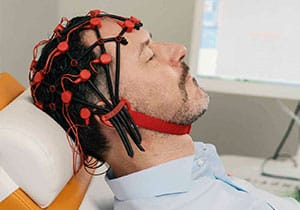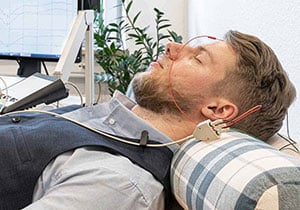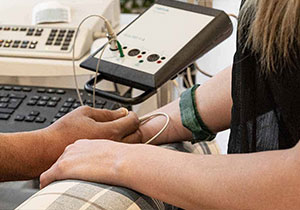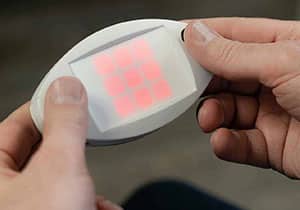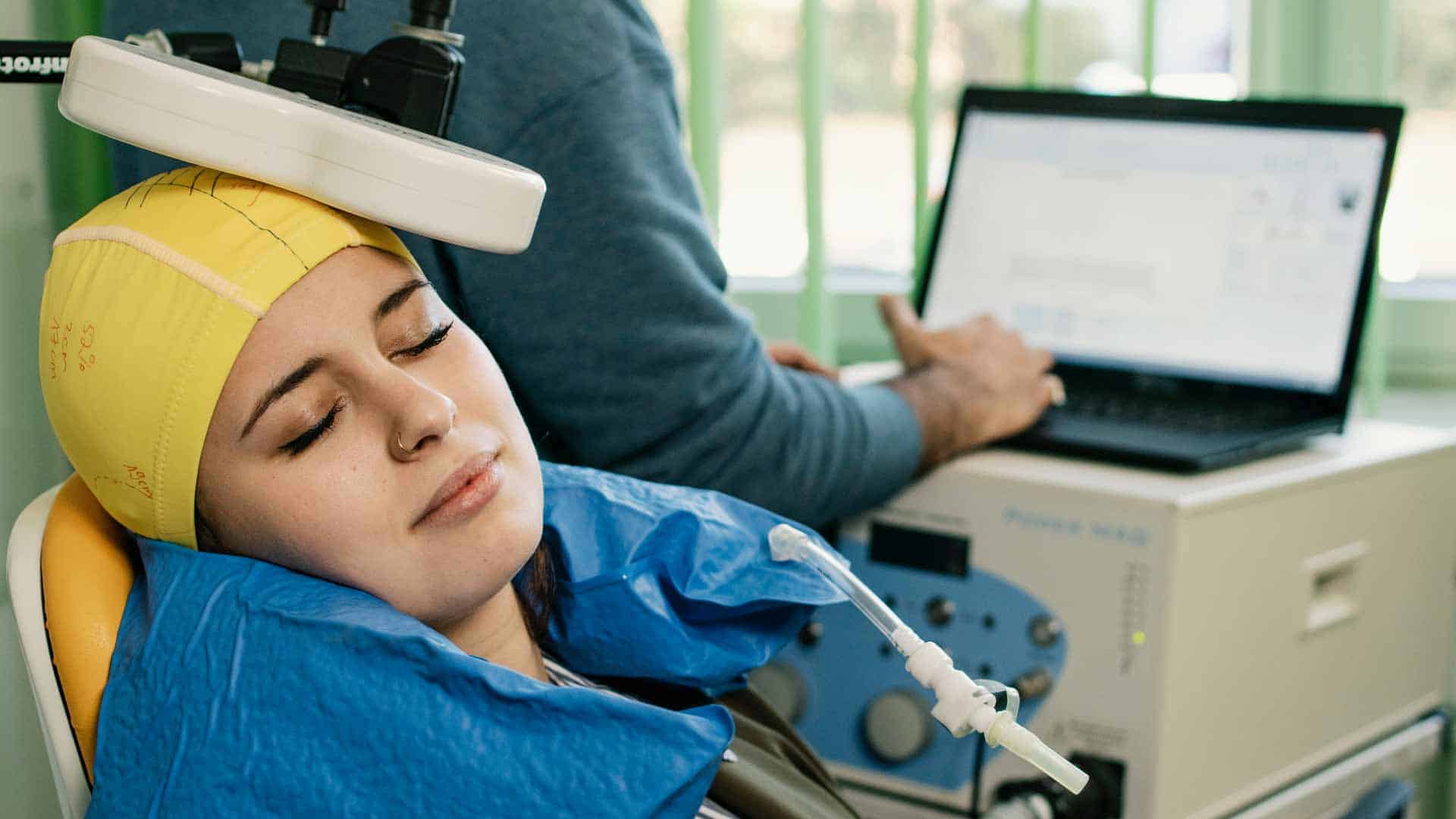
Repetitive transcranial magnetic stimulation (rTMS)
Repetitive Transcranial Magnetic Stimulation is an effective and non-invasive method to help people with severe depression.
What is rTMS?
rTMS is the abbreviation for “repetitive transcranial magnetic stimulation”, a form of non-invasive neurostimulation that has now been very well researched scientifically. This involves applying a rapidly oscillating magnetic field with a special magnetic coil over certain areas of the brain to influence the activity of certain underlying brain areas. The procedure is now widely used to improve brain function in numerous neuropsychiatric disorders as well as in healthy individuals for targeted performance enhancement.
The application of rTMS increases or decreases the activity of certain cells and brain areas located under the stimulation site by up to 20–40% depending on the applied frequency, which can cause an effective permanent change in brain activity. rTMS can significantly improve mood and emotional state, cognitive abilities, memory, social skills and neuronal stability over longer periods of time, depending on the specific brain regions stimulated or modulated depending on the symptoms.
Numerous scientific studies have shown that with appropriate targeted use over a period of several weeks, mood, language and mathematical skills, attention span, problem-solving ability, coordination and memory performance as well as many other neuropsychological skills can be significantly improved. These functional improvements can be used alone or in combination with other therapeutic procedures to accelerate the healing process. rTMS is now successfully used as an alternative or supplement to other procedures for many diseases.
What is the biological effect of rTMS?
Nerve cells are electrically charged, so the function of the brain is based on electrical currents in addition to the well-known effect of messenger substances. In most neuropsychiatric disorders, there is a disturbance in the activity or regulation of brain tissue. By applying rapidly switched strong magnetic pulses using a special magnetic coil, the brain tissue is excited or down-regulated depending on the set frequency, utilizing the principle of induction. This means that its activity can be specifically influenced.
There are now a number of scientific studies under sophisticated control conditions. The effectiveness of rTMS is about as good as that of suitable medication. The procedure is often superior to drug therapy, as numerous studies have shown in cases of treatment-resistant courses with purely drug therapy. In practice, the individual combination of rTMS with other approaches, in particular with psychotherapeutic treatment, has proven successful in achieving a lasting improvement in health restrictions and a healthy state.
The process of magnetic stimulation using rTMS also alters the activities of various neurotransmitters in the brain (including serotonin, noradrenaline, dopamine, glutamate and others). Repeated application of the procedure can achieve lasting changes, regulate overactive regions of the brain and activate underactive regions. When used in a targeted manner, this can normalize brain activity and thus also treat many neuropsychiatric disorders.
Are the costs covered by statutory health insurance? How high are the costs?
This is an individual health service (so-called IGeL) or “self-payer service”, which is not covered by statutory health insurance. With private health insurance companies, a cost application can be submitted, which is decided on individually by the insurer.
Costs for rTMS 100 euros per session. For effective therapy, 20 sessions are required in the first month, followed by 10 maintenance sessions with weekly application.

